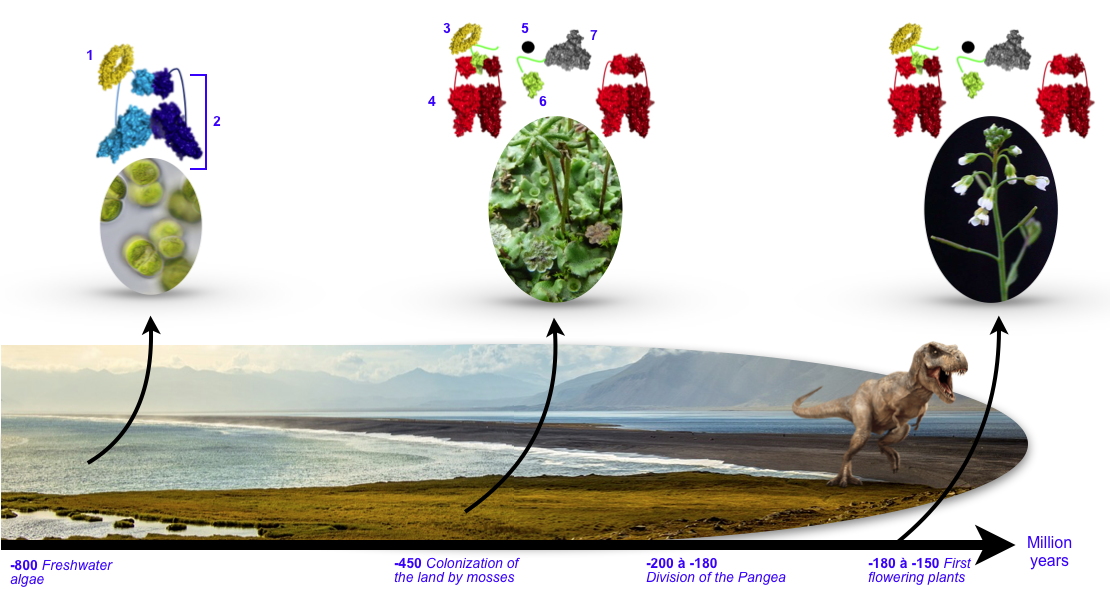When a flowering plant grows towards the light, when its roots expand downwards, when its leaves and flowers emerge regularly positioned on its stem, it is always because a small plant hormone has come into action. It is called auxin and fulfills many functions during the life of a plant. As in animals, plants feel the presence of a hormone and respond to it through a series of reactions grouped in a "signaling cascade" that involves a small number of proteins. Understanding how and when the auxin signaling pathway appeared in evolution would help to understand how plants have successfully complexified to adapt to the terrestrial environment.
Thus, researchers at our laboratory have been interested in the evolution of the components involved in signaling and response to auxin in different species representative of plant evolution. They discovered that some of these components exist in algae, indicating that they were already present nearly a billion years ago in the common ancestor of algae and land plants. Through biochemical studies, these researchers went further by showing that some of these elements were already functionally related to each other in this ancestor but that, in the absence of a complete cascade, the plant could not perceive and respond to this phytohormone. The complete assembly of these bricks into a functional cascade only happened about 450 million years ago at the time of the colonization of the mainland. Subsequently, the auxin signaling pathway became more complex through duplications to the point of becoming involved in many other processes encountered in more "sophisticated" plants such as flowering plants.

Illustration of evolutionary tinkering.
3 and 4 come from 1 and 2 respectively.
5 = Auxin.
6 and 7 partially existed before 450 Ma. An auxin recognition sequence was added around -450 Ma to create the auxin signaling
Plants did not always lived on earth and have not always been so complex. Among the plants that were living in fresh water 800 million years (Ma) ago as algae, some colonized the mainland about 450 Ma ago: mosses. Then ferns appeared 420 Ma ago. Then, around -300 Ma, the era of seed plants began. The flower is an invention that dates back 150 to 180 Ma when dinosaurs still dominated the Earth.